The Rome Abstracts: "Evolutionary Mechanisms"
The Rome Abstracts: "Evolutionary Mechanisms"
By Suzan Mazur

Image - Courtesy of Mark A.S. McMenamin.
Why have the two major evolution conferences of the year (this and last) been hosted outside the United States? In July 2008, we had Altenberg, Austria and the "Extended Synthesis", and on March 3-7, 2009 in Rome, "Biological Facts and Theories: A Critical Appraisal 150 Years After The Origin of Species" under the patronage of the Pontifical Council for Culture.
The March conference will reconsider "issues surrounding evolutionary biology" and topics such as evolutionary mechanisms (a full day of talks), human origins, and the philosophical and theological aspects of evolution, with dozens of the most substantial evolutionary thinkers on Earth present. It is a collaboration of the University of Notre Dame and the Pontifical Gregorian University. But why couldn't such an event take place in Indiana?
And while there has been some discussion about streaming the meeting live on the Internet, PGU organizers have advised that the conference abstracts presented to the media this week were in Italian, meaning the English-speaking world may not be getting the message of just how central evolutionary mechanisms are to this highly important conference. Nor that scientists who will speak about evolutionary mechanisms think Darwinian natural selection should be relegated to a significantly lesser role.
So I asked the following scientists who are presenting in the "Evolutionary Mechanisms" sessions if they'd share their abstracts -- in English. They are: Stuart Newman -- New York Medical College; Scott Gilbert (Rome conference scientific committee) -- Swarthmore College; Stuart Kauffman (Rome conference scientific committee) -- University of Calgary and Harvard University; Lynn Margulis -- University of Massachusetts-Amherst and Oxford University; Robert Ulanowicz -- University of Maryland; Jeffrey Feder -- University of Notre Dame; Francisco Ayala -- University of California-Irvine; Jean Gayon -- Universite Paris. Their abstracts follow.
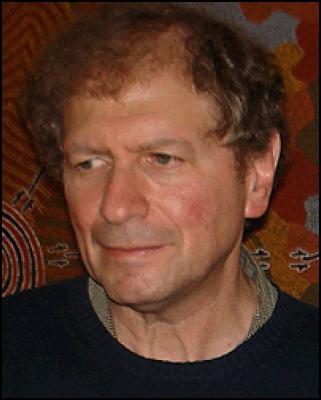
STUART A. NEWMAN
This conference is one of the few worldwide in the anniversary year of Darwin and "The Origin of Species" that is providing a forum, as well, for concepts of evolutionary change other than natural selection of incremental variations. Over the past two decades our understanding of the dynamic and plastic nature of developmental systems has provided insight into major modes of evolutionary innovation left out of the well known Modern Synthesis. It is to the credit of the conference organizers that in addition to the legacy of Darwin, their scientific program will include this newer story. -- Stuart A. Newman, Professor of Cell Biology and Anatomy, New York Medical College
A "PATTERN LANGUAGE" FOR EVOLUTION AND DEVELOPMENT OF ANIMAL FORM
Ancient animals arose from unicellular organisms that had billions of years of genetic evolution behind them. In this talk I will consider the role played by a core set of “dynamical patterning modules” (DPMs) in the origination, development and evolution of multicellular animals, the Metazoa These functional modules consist of the products of certain genes of the “developmental-genetic toolkit,” in association with physical processes and effects characteristic of chemically and mechanically excitable systems of the “mesoscale” (i.e., linear dimension ~0.1-10 mm).
Once cellular life achieved this spatial scale by the most basic DPM, cell-cell adhesion, a variety of physical forces and effects came into play, including cohesion, viscoelasticity, diffusion, spatiotemporal heterogeneity based on lateral inhibition, and global synchronization of oscillatory dynamics.
I will show how toolkit gene products and pathways that pre-existed the Metazoa acquired novel morphogenetic functions simply by virtue of the change in scale and context inherent to multicellularity. I will show that DPMs, acting singly and in combination with each other, constitute a “pattern language” capable of generating all metazoan body plans and organ forms.
Another implication is that the multicellular organisms of the late Precambrian-early Cambrian were phenotypically highly plastic, capable of fluently exploring morphospace in a fashion relatively decoupled from both function-based selection and genotypic change. The stable developmental trajectories (“developmental programs”) and morphological phenotypes of modern organisms would then have arisen by stabilizing selection that routinized the generation of morphological motifs that were originally manifestations of the physical properties of multicellular aggregates.
This perspective provides a resolution of the apparent “molecular homology-analogy paradox,” whereby widely divergent modern animal types utilize the same molecular toolkit during development. It does so however, by inverting the neo-Darwinian tenet that phenotypic disparity was generated over long periods of time in concert with, and in proportion to, genotypic change.
Related
stories:
Stuart Newman Video Interview: Evolution
Politics
The Origin of Form Was Abrupt Not
Gradual
Rethinking Evolution with Stuart Newman
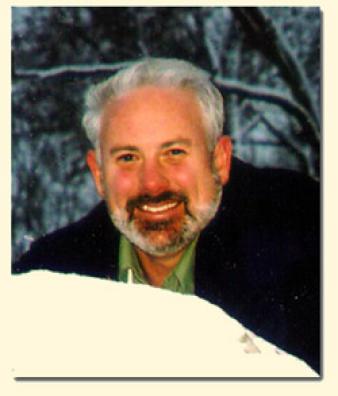
SCOTT F. GILBERT
The significance of evolutionary mechanisms being central to the Rome evolution conference? Including the notion of evolutionary mechanisms gets around being tied down to one paradigm. A very wide net has been cast even within the "Evolutionary Mechanisms" discussion. There are some things not being discussed. And other things that are.
Lynn Margulis is talking about symbiosis and the origin of species -- a model of cooperation as opposed to a model of strict competition -- and Stuart Kauffman and Stuart Newman are addressing the physical antecedents and nongenetic evolution. These are things that are not in the normal paradigm of competitive natural selection.
Natural selection will be represented -- Doug Futuyma is speaking. People will be discussing natural selection. But in a way natural selection has been proven so often and so definitively, it's like discussing -- are skeletons made of bones?
Natural selection occurs. Natural selection occurs within species. But natural selection alone cannot explain how butterflies got their wings. How the turtle got its shell. Once you have variation within species, then natural selection can work. Do I think natural selection should be relegated to a less important role in the discussion of evolution? Yes I do. --Scott F. Gilbert, Howard A. Schneiderman Professor of Biology, Swarthmore College
EVOLUTIONARY DEVELOPMENTAL BIOLOGY: EVOLUTION BY EPIGENESIS
In 1893, Thomas Huxley, wrote, "Evolution is not a speculation but a fact; and it takes place by epigenesis." Note that evolution's chief defender did not complete his sentence with the phrase "natural selection," for Huxley was interested in the generation of the diversity needed for natural selection. That phase of evolution was regulated by development. Recent work has established five main mechanisms for the generation of anatomical diversity through changes in development, and this talk will review them and provide examples from the recent literature.
These mechanisms are:
(1) Heterochrony (changing the time or duration of developmental phenomena or gene expression)
(2)
Heterotopy (changing the placement of
developmental phenomena or the cell types in
which a
gene is expressed)
(3) Heterometry (changing the amount of gene expression in a manner sufficient to alter the phenotype)
(4) Heterotypy (changing the sequence of the gene being expressed during development)
(5) Heterocyberny (change in the "governance" of a trait from being environmentally induced to being genetically fixed)
These mechanisms have profound
significance for how new traits can be generated, how they
become integrated into developing organisms, and how they
can become propagated through a population. It is argued
that adding these developmental data
and contexts
provides a new and more complete theory of evolution,
including a theory of body construction along with a theory
of change.
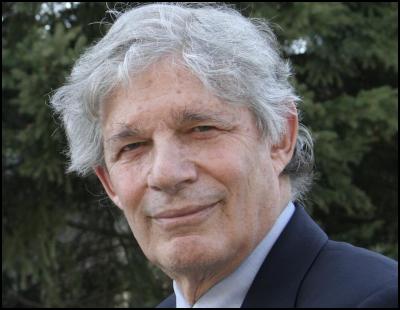
STUART KAUFFMAN
The fact that the Pontifical Gregorian University and STOQ are hosting a meeting on evolution in the Darwin year is of major significance culturally. In the United States, only a few years ago, Intelligent Design proponents attempted yet again to ram a poverty struck version of science down the throats of American school children. Yet even one of its leaders, Michael Behe, admitted in court that astrology would count as a science under their definition of science.
At present, some members of the U.S. Congress, and George Bush, to appease the religious right, support Intelligent Design, whose statistical arguments are bogus largely through their failure to understand the concept of Darwinian "exaptations" in the emergence of novel functions in evolution. Thus, this stance by a Church that speaks for a billion Catholics is honest, timely and brave.
Darwin changed our thinking as much as any mind has. The ramifications from Darwin are still being unpacked, including a possibility that may have deep spiritual importance: no natural law may suffice to describe the full evolution of the biosphere, human economy, and human culture.
In its place, in my view, is a ceaseless creativity in which we cannot know before hand even what CAN happen, let alone what will happen. But then reason, the highest human virtue of the Enlightenment, is an insufficient guide to live our lives. We need reason, emotion, intuition, imagination, story, metaphor and more. In fact, we need a new Enlightenment. In my own view, we can consider this fully natural creativity in the universe God. We are its children. -- Stuart Kauffman FRSC, MacArthur Fellow
ARE CELLS DYNAMICALLY CRITICAL
The genetic regulatory network in humans has some 23,000 genes, among which are at least 2,040 transcription factor genes. These TFs regulate one another's transcriptional activity and those of genes that are regulated but not regulating. Work on yeast gene networks shows that they appear to be one large interconnected network. Probably the same is true for humans This genetic regulatory network is a non-linear dynamical system of high complexity. Modeling genes as binary, on, off, devices and studying large "random Boolean networks" has shown that these networks, and piecewise linear networks, and linear ordinary differential equation networks all show the same generic behaviors: They have an ordered regime and a chaotic regime, separated by a dynamically "critical" phase transition. Such networks also show dynamical attractors, somewhat analogous to lakes in a mountainous region, each fed by streams in its drainage basin.
The two central hypotheses I will explore are that cell types correspond to dynamical attractors, the lakes in the analogy, and cell differentiation consists of signals or noise that lifts the system from one lake into a different basin of attraction, or drainage basin. Critically, I suppose, with my colleague Dr. Sui Huang, that cancer cells as also attractors: the Cancer Attractor Hypothesis, and will discuss current high throughput high content screening of small molecule chemical libraries that are able to induce differentiation of cancer cell lines into non-proliferating mature cells. We hope this will afford a systematic approach to cancer "differentiation therapy". The second hypothesis I will discuss is that evolution has selected cells that are dynamically critical. Importantly, such systems optimize information transfer, and information storage. In addition, we have initial results that critical networks also maximize power efficiency - a sensible target of natural selection. Even more importantly, I will discuss recent work suggesting that real cells are actually critical, and that cell types are, indeed, dynamical attractors.
Related Story: Stuart Kauffman: Rethink Evolution, Self-Organization Is Real

Click for big version
LYNN MARGULIS
ORIGIN OF EVOLUTIONARY NOVELTY BY SYMBIOGENESIS
Whereas speciation by accumulation of "random DNA mutations" has never been adequately documented, a plethora of high-quality scientific studies has unequivocally shown symbiogenesis to be at the basis of the origin of species and more inclusive taxa.
Members of at least two prokaryotic domains (a sulfidogenic archaebacterium, a sulfide-oxidizing motile eubacterium) merged in the origin of the first nucleated organisms to form the earliest eukaryotic organism in the mid-Proterozoic Eon (c. 1200 million years ago.)
Such a heterotrophic, phagocytotic motile protoctist was ancestral to all subsequent eukaryotes (e.g., other protoctists, animals, fungi and plants).
The defining seme of eukaryosis, the membrane-bounded nucleus as a component of the karyomastigont, evolved as Thermoplasma-like archaebacteria and Perfilievia-Spirochaeta-like eubacteria symbiogenetically formed the amitochondriate LECA (the last eukaryotic common ancestor). Their co-descendants (that still thrive in organic-rich anoxic habitats) are amenable to study so that videos of them can be shown here.
There are no missing links in our scenario. Contemporary photosynthetic (green) animals (e.g., Elysia viridis, Convoluta roscoffensis), nitrogen-fixing fungi (Geosiphon pyriforme), cellulose digesting animals (cows, Mastotermes darwiniensis termites) and plants (Gunnera manicata) make us virtually certain that Boris Michailovich Kozo-Polyansky's (1890-1957) analysis (Symbiogenesis: A New Principle of Evolution, 1924) was and still is correct
Symbiogenesis accounts for the origin of hereditary variation that is maintained and perpetuated by Charles Darwin's natural selective limitations to reaching the omnipresent biotic potential characteristics of any species.
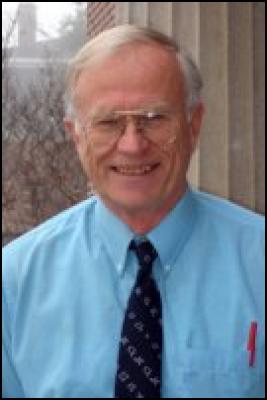
ROBERT E. ULANOWICZ
PROCESS AND ONTOLOGICAL PRIORITIES IN EVOLUTION
Charles Darwin, a fervid admirer of Isaac Newton, nonetheless described evolution as a process, rather than as the action of laws upon objects. Against this bold initiative, the "Grand Synthesis" of Fisher and Wright and the ensuing discoveries in molecular biology ushered in the Neo-Darwinian scenario wherein ontological emphasis has reverted to material objects and mechanisms. Other life sciences, however, continue to lend themselves more naturally to description in terms of processes.
The dynamics of ecosystems, for example, can be seen to rest upon a set of fundamental postulates corresponding to the attributes of processes. Mutuality stands at the ontological core of this perspective, known as "process ecology". By comparison, competition is seen to be accidental and derivative. Unlike in the Newtonian/Darwinian schema, selection in process ecology can occur internal to the system, rather than solely via the exogenous agency of "natural selection".
The monist dictum of "survival of the fittest" appears to relate to only one side of a broader Heraclitean/Hegelian agonism. Such discrepancies with orthodox evolutionary theory suggest that a far richer picture of evolution (and the ethos that it informs) may be possible by reverting to Darwin's initial instinct to describe living nature primarily as process. Adopting the process perspective mitigates many of the ostensible conflicts between science and religion.
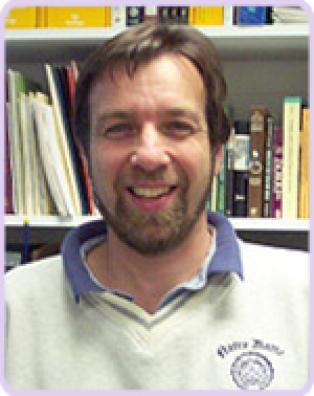
JEFFREY L. FEDER
THE MYSTERY OF SPECIATION
Charles Darwin once described speciation as that “mystery of mysteries”. However, this is one mystery that is now arguably solved In this talk, I will discuss advances in our understanding of how new species form since Darwin first posed the problem. I will outline current views regarding the geographic context and genetic bases for speciation. I will also examine how and why barriers to gene flow evolve - the crux of the speciation problem - highlighting a few case studies demonstrating incipient speciation in action I will conclude by discussing current research directions in the field. Although we may understand the general mechanisms generating new species, much remains to be learned. In particular, we are entering an exciting new period of synthesis in which the ecological, physiological, developmental, and genetic bases for population divergence can now be fully integrated for model and non-model organisms alike. From this body of work, case studies are accumulating to soon allow broad patterns to be identified concerning the relative importance of different mechanisms for the genesis of biodiversity. Although the mystery surrounding speciation may be gone, the thrill is not. Speciation is as important and as fascinating a question now, as ever, for understanding life.

FRANCISCO J. AYALA
DARWIN'S REVOLUTION
Darwin is deservedly given credit for the theory of evolution. He accumulated evidence demonstrating that organisms evolve over eons of time and diversify as they adapt to environments that are enormously diverse. Most important, however, is that he discovered natural selection, the process that accounts for the evolution of organisms and for their adaptive features; that is, their “design.” The design of organisms is not intelligent, as it would be expected from an engineer, but imperfect and worse: defects, dysfunctions, oddities, waste, and cruelty pervade the living world.
Darwin’s theory of evolution accounts for the design and diversity of organisms as the result of the gradual accumulation of spontaneous mutations sorted out by natural selection. Mutation and selection have jointly driven the marvelous process that, starting from microscopic organisms, has yielded orchids, birds, and humans. The theory of evolution conveys chance and necessity, randomness and determinism, jointly enmeshed in the stuff of life Darwin’s fundamental discovery is that there is a natural process that is creative although not conscious.
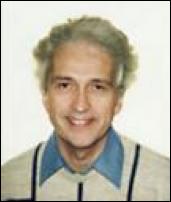
JEAN GAYON
HISTORY OF EVOLUTIONARY THEORIES
Since 1859, evolutionary biologists have been haunted by the question of whether their conceptions are or are not ‘Darwinian’. Although these terms are ambiguous, the repeated reference to Darwin has a theoretical signification.
Darwin settled a conceptual framework that has canalized evolutionary research over one-and-a half centuries. The structure of the two major aspects of this framework (the hypotheses of descent with modification and natural selection) are reconstituted and confronted with further evolutionary research, with special regard to the last 50 years.
In both cases, the article proposes a classification of the criticisms addressed to Darwin’s two fundamental hypotheses, and compares the particular models of "descent with modification" and "natural selection" that Darwin defended with more recent models.
In The Origin of Species, the postulates underlying Darwin’s hypothesis of "descent with modification" are expressed in a branching diagram, which has generated over time three major criticisms both among Darwinians and non-Darwinians: rejection of gradual modification, rejection of a conception of change exclusively concentrated at the level of the species, and more radical objections regarding the very idea that genealogy can be represented through a unique "tree". There may be several trees for several levels of integration of biological entities; lateral gene transfer and symbiosis also impose a network mode of representation.
As for the natural selection hypothesis, it has been criticized at two levels: the level that Darwin called the "mere hypothesis", and that of a "principle" able to explain and unify the whole theory of the history of life.
At the first level, three controversies have dominated since the 1960s: controversies over the neutral theory of molecular evolution, controversies over group selection, and controversies over the limits imposed by complexity and self-organization.
At the second level (Darwin’s "well-grounded theory"), contemporary evolutionary biologists have challenged Darwin’s idea that natural selection does account for as many "independent classes of facts" as adaptation, extinction, divergence, geological distribution of fossils, geographical distribution of species, relations between embryology and evolution, and patterns of classification.
Contemporary evolutionary biology admits that natural selection is the only acceptable explanation for adaptation, has raised serious doubts about the ability of natural selection to be an all-sufficient principle for the explanation of some or all the other classes of facts that Darwin explained through this principle.
In conclusion, the article examines the successive and ambivalent attitudes of Stephen Jay Gould towards "Darwinism". In 1980, Gould claimed that Darwinism was "dead". In his Structure of evolutionary theory (2002), he had a more nuanced appreciation, where Darwinism had not been either "extended" or "replaced", but "expanded". In Gould’s terms, "expansion" means a reformulation of the fundamental principles of Darwinism, through generalization of the main Darwinian processes and addition of new principles.
The article concludes that the Darwinian framework has persisted, not under the form of the particular models of descent of modification and natural selection [Darwin] had in mind, but in the sense of high level heuristic postulates that have constrained and canalized the possible theoretical choices accessible to evolutionary biologists and paleontologists.
 Suzan Mazur is the author of Altenberg 16: An Exposé of the Evolution Industry. Her interest in evolution began with a flight from Nairobi into Olduvai Gorge to interview the late paleoanthropologist Mary Leakey. Because of ideological struggles, the Kenyan-Tanzanian border was closed, and Leakey was the only reason authorities in Dar es Salaam agreed to give landing clearance. The meeting followed discovery by Leakey and her team of the 3.6 million-year-old hominid footprints at Laetoli. Suzan Mazur's reports have since appeared in the Financial Times, The Economist, Forbes, Newsday, Philadelphia Inquirer, Archaeology, Connoisseur, Omni and others, as well as on PBS, CBC and MBC. She has been a guest on McLaughlin, Charlie Rose and various Fox Television News programs. Email: sznmzr @ aol.com
Suzan Mazur is the author of Altenberg 16: An Exposé of the Evolution Industry. Her interest in evolution began with a flight from Nairobi into Olduvai Gorge to interview the late paleoanthropologist Mary Leakey. Because of ideological struggles, the Kenyan-Tanzanian border was closed, and Leakey was the only reason authorities in Dar es Salaam agreed to give landing clearance. The meeting followed discovery by Leakey and her team of the 3.6 million-year-old hominid footprints at Laetoli. Suzan Mazur's reports have since appeared in the Financial Times, The Economist, Forbes, Newsday, Philadelphia Inquirer, Archaeology, Connoisseur, Omni and others, as well as on PBS, CBC and MBC. She has been a guest on McLaughlin, Charlie Rose and various Fox Television News programs. Email: sznmzr @ aol.com


 Eugene Doyle: The Fall Of Saigon 1975 - Fifty Years Of Repeating What Was Forgotten
Eugene Doyle: The Fall Of Saigon 1975 - Fifty Years Of Repeating What Was Forgotten Peter Dunne: Dunne's Weekly - Trump's Tariffs Still Pose Risks For New Zealand
Peter Dunne: Dunne's Weekly - Trump's Tariffs Still Pose Risks For New Zealand Keith Rankin: Barbecued Hamburgers And Churchill's Bestie
Keith Rankin: Barbecued Hamburgers And Churchill's Bestie Gordon Campbell: On Why The US Stands To Lose The Tariff Wars
Gordon Campbell: On Why The US Stands To Lose The Tariff Wars Eugene Doyle: Before It’s Too Late - Reimagine New Zealand’s Military Future
Eugene Doyle: Before It’s Too Late - Reimagine New Zealand’s Military Future  Binoy Kampmark: Gender Stunts In Space - Blue Origin’s Female Celebrity Envoys
Binoy Kampmark: Gender Stunts In Space - Blue Origin’s Female Celebrity Envoys